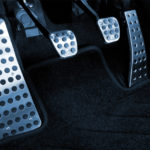With a diverse range of throttle position sensors and throttle bodies, Cambiare shares some insight on its integral range.
The throttle body is integral to combustion engines and controls the amount of air that is let into the engine during varying operating conditions. Controlled by the movement of the accelerator pedal, the butterfly valve in the throttle body was traditionally operated mechanically by means of a cable. The harder the pedal was pushed, the wider the throttle valve opens.
The ‘drive-by-wire’ system found in engines today has a throttle position sensor which maintains the relationship between the driver’s control of the accelerator pedal and the throttle body. The throttle position sensor is used to monitor the position of the butterflyvalvetoensurethatthethrottle body actuator works in conjunction with the accelerator pedal.
A symbiotic relationship
The throttle position sensor continually measures the position of the throttle butterfly and is combined with other data, such as air temperature, engine RPM, mass airflow and the speed of throttle position changes which are monitored by the ECU. This information precisely determines how much fuel is needed to be injected into the engine at any given moment. A working throttle position sensor creates a symbiotic relationship between the driver and the throttle body, allowing the vehicle to accelerate, cruise or decelerate smoothly and efficiently.
Given the working relationship between the throttle body and the throttle position sensor, a fault in either part can cause similar symptoms to manifest. Common issues caused by a failing throttle body and/or throttle position sensor include:
- Car will not accelerate, lacks power when accelerating, or accelerates on its own
- Engine will not idle smoothly, idles too slowly, or stalls
- Car accelerates but will not exceed a relatively low speed or shift up
- The ‘check engine light’ illuminates, accompanied by any of the above behaviour
The correct course of action
Due to the similarities of the symptoms shared between a problematic throttle body and throttle position sensor, it is imperative that technicians inspect the system thoroughly to ensure that they find the root of the problem.

Detecting failures in throttle bodies
Lack of maintenance is one of the key causes of any system failure. This is often due to accumulated contamination. The carbon particles and oil mist in the vapour from the crankcase ventilation system of the engine causes a build-up of carbon deposits within the throttle body. This restricts the airflow and in extreme cases, may cause the valve to stick so that adequate air cannot reach the engine.
Detecting failures in throttle position sensors
A failing throttle position sensor will hinder engine performance because the air-to-fuel ratio will be compromised, causing it to fail in several ways. All of which can result in poor fuel economy and performance limitations. The sensor can fail gradually, or all at once.
When this happens, the ‘check engine light’ will likely be illuminated and in the case of most modern vehicles, it will operate in ‘limp home’ mode of operation, with reduced power if a failure is detected. This is intended to allow the driver to safely get off a busy road when there is a problem with the throttle position sensor.
Replacement upon failure
Throttle bodies and throttle position sensors are non-serviceable items. This means that when there is any evidence of failure, they need to be replaced. It should be noted that the failure of these components is not always easily diagnosed. The only way to ensure the correct diagnosis is by carefully analysing the fault codes via live data readings and visually inspecting the part.
Making the right choice
Cambiare has a diverse range of throttle bodies and throttle position sensors which are both OE quality and BER compliant.
Highlights include:
Throttle bodies
- VE387088 for Volkswagen Passat 2.0 (2010-2014)
- VE387087 for Volkswagen Tiguan 2.0 (2008-2011)
- VE387118 for Ford Mondeo 2.0 (2007- 2012)
Throttle position sensors
- VE378000 for Ford Focus 1.6 (2004- 2012)
- VE378003 for Peugeot 206 1.4 (1998- 2009)
- VE378001 for Ford KA 1.3 (1996-2004)
Backed by a two-year/30,000-mile warranty, the ranges are quality assured to provide customers with peace of mind. Fully catalogued on the F:Drive, MAM Autocat and the Cambiare website (www.cambiare- ve.com), the parts are available from FPS via same/next-day delivery.








